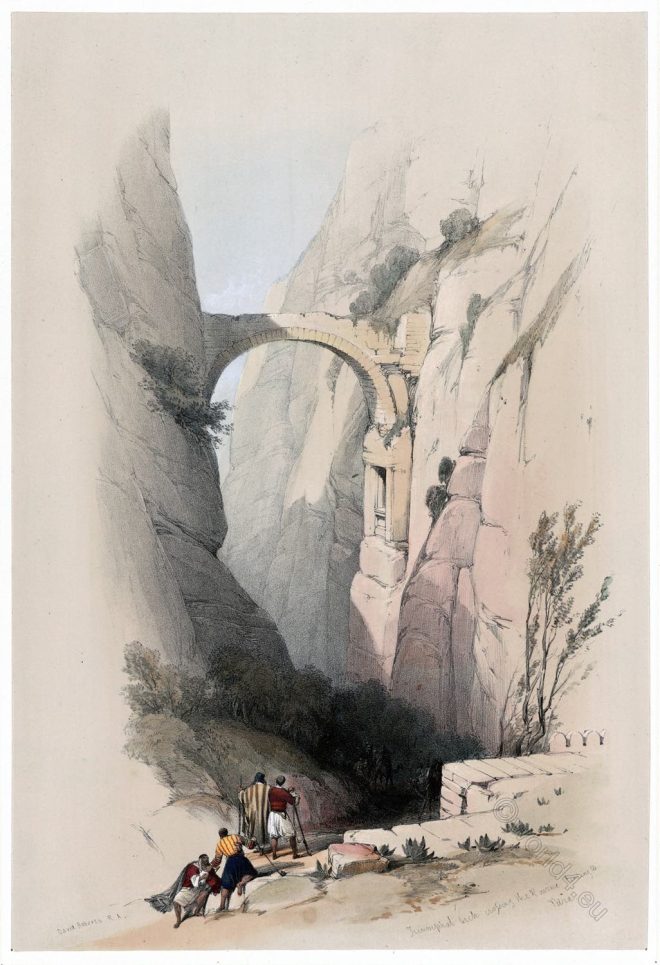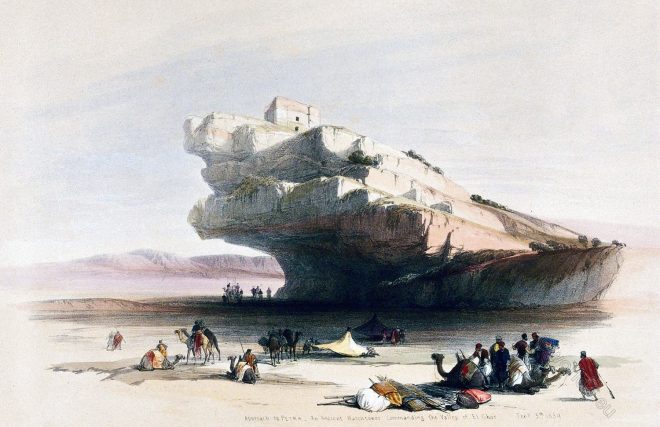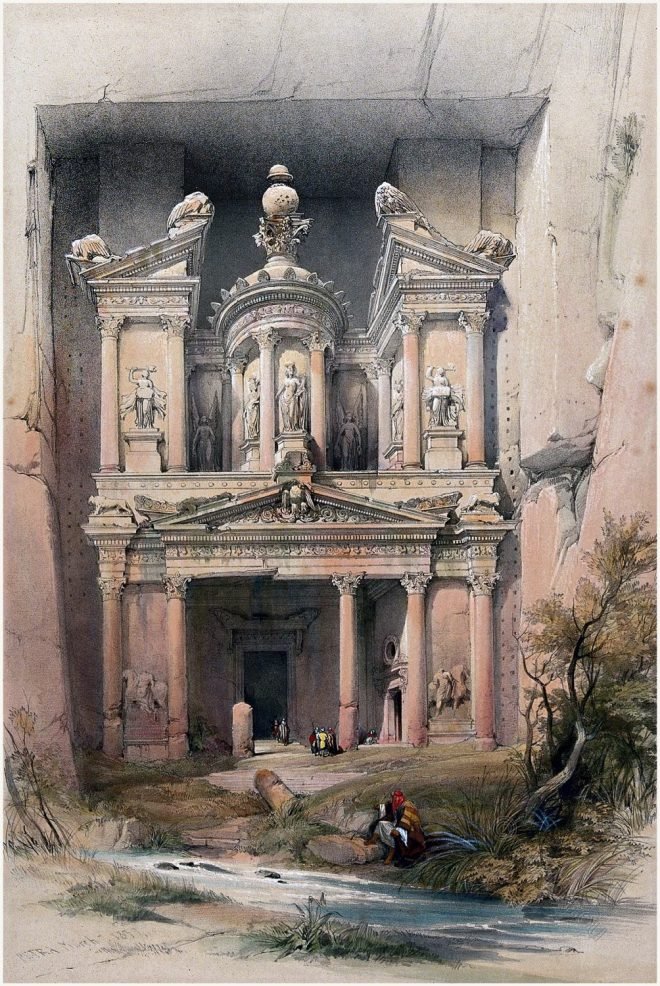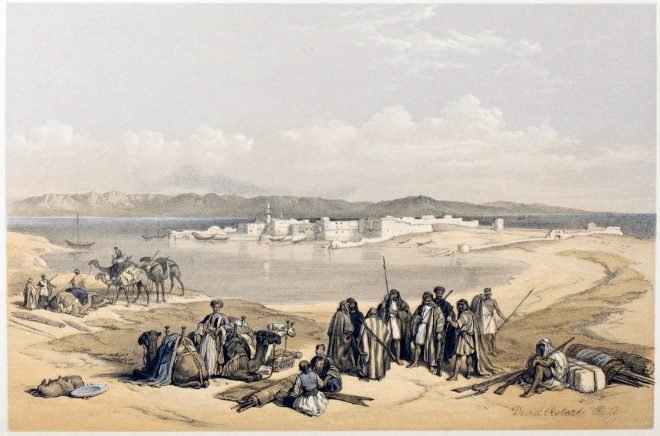Near the mouth of the chasm El Sik (Bab as-Sīq, Gateway to the Siq), an Arch, at a considerable height, connects the rocks on either side.
Tag: David Roberts
The Holy Land, Syria, Idumea, Arabia, Egypt, & Nubia, by David Roberts. London: Published by Day & Son. Cate Street, Lincoln’s Inn Fields, 1855.
The Lower Portion of Al-Khazneh, Petra.
This view partially gives the profile of Al-Khazneh. The general architecture is Greek, but mingled with the luxurious fancy and exuberant decoration of Asia
Petra. An Ancient Watch Tower commanding the valley of El Chor.
Ancient rock-cut watch-tower overlooking the valleys of El Ghor and Akabah. February 5th, 1839.
The Al-Khazneh in the ancient city of Petra.
The Al-Khazneh is a mausoleum carved out of the rock by the Nabataeans in the ancient city of Petra
General View of Suez. David Roberts set out from Cairo for the Holy Land.
David Roberts set out from Cairo for the Holy Land on 7 February 1839, with a small caravan including servants in Arabian and Turkish dress
Scene on the Quay of Suez (Egypt) and its future significance.
It is perhaps too early to predict the future importance of the relatively quiet quay of Suez, the direct passage between Europe and Asia through the Red Sea.
Approach to Mount Sinai. Wady Barah. Men resting their camels.
Men resting their camels and smoking by the approach to Mount Sinai. This View is taken from the Encampment at Wady Barah of the Artist and his party.
Travelers at the wells of Moses, or Eyun Musa
Travelers at the wells of Moses, or Eyun Musa, on the eastern side of the Gulf of Suez.
Convent of St. Catherine with Mount Horeb, Egypt.
The convent of St. Catherine. “The front of Mount Horeb rose like a wall before us, and one can approach quite to the foot, and touch the Mount.”
The convent of St. Catherine Mount Sinai looking towards
The Artist has taken the Sketch about due South of the Convent, looking upon the track which he pursued from the presumed Plain of the Israelite Encampment.










